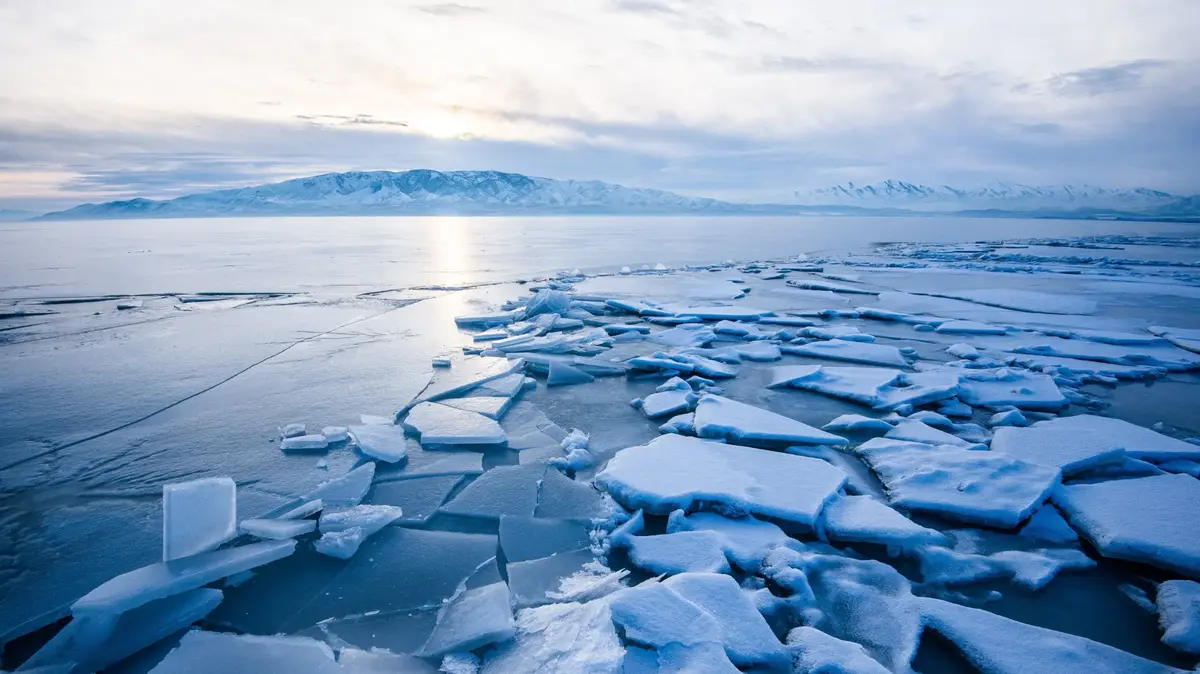Enlarge image
Broken floe from the Larsen Ice Shelf floats in the sea
Photo: Perspective / IMAGO
The collapses of the Larsen A and Larsen B ice shelves on the Antarctic Peninsula are probably related to the intense exposure to warm-moist air currents.
An international research team writes in the journal Communications Earth & Environment that these atmospheric flows could destabilize the ice through heat waves, ice melt and high seas, for example, and thus also contribute to the break-off of large icebergs.
The climatologists warn of the effects of such air currents on the surviving Larsen C Ice Shelf, the largest surviving ice shelf on the Antarctic Peninsula.
Ice shelves are thicker sheets of ice that float on the sea but are still connected to the ice on the mainland.
They slow down the flow of glacial ice from the inland to the sea and thus stop the loss of ice mass.
Large areas of ice shelf therefore serve as a kind of stabilizer for the ice masses behind them.
Icebergs break off again and again at the edges of ice shelves – during what is known as calving.
The Ice Collapse by Larsen A to D
For decades, researchers have been particularly worried about the Larsen Ice Shelf on the east side of the Antarctic Peninsula, which stretches far towards South America.
This ice shelf includes several areas, which are numbered from north to south with the letters A to D.
The Larsen A ice shelf in the north of the peninsula collapsed in early 1995 during the Antarctic summer over an area of 2000 square kilometers and shattered into thousands of small icebergs.
Seven years later, the much larger Larsen B ice shelf also disintegrated within a short time.
What led to the collapse of the two ice shelves was previously unclear.
In the current study, the team led by climatologist Jonathan Wille from the Université Grenoble Alpes examined the influence of so-called atmospheric fluxes.
These bands of air currents transport warm, humid air masses from the subtropics and temperate latitudes over long distances towards the poles - and can lead to extreme weather such as heat waves, heavy precipitation, storms and rough seas.
For example, the record temperature of 18.3 degrees Celsius measured in February 2020 at the Esperanza research station on the Antarctic Peninsula was related to this phenomenon.
Ice shelf collapses correlate with air currents
In the past 20 years, researchers on the Antarctic Peninsula have identified 21 large icebergs that have broken off.
Using climate models and satellite images, they examined the influence of atmospheric fluxes.
Accordingly, such warm air currents preceded 13 of the 21 events - about 62 percent.
The phenomenon also played a part in the two collapses of Larsen A and Larsen B.
The Conger Ice Shelf in East Antarctica collapsed at the end of March.
Most of the former ice shelf is now floating as an iceberg named C-38 in the Southern Ocean off Antarctica's Wilkesland region, according to satellite imagery.
It is following the C-37 iceberg that calved from the neighboring Glenzer Ice Shelf a week earlier.
A rupture was also reported from nearby Totten Glacier, the largest glacier in East Antarctica.
According to the researchers, the air currents ensure high melting rates on the surface of the ice shelf.
On the ice, the water collects in lakes or seeps through cracks.
In addition, the warm, humid air thins out the sea ice at the edges of the ice shelf, so that it is directly exposed to seawater - especially when there are heavy seas.
However, the authors emphasize that the processes leading to the collapse of an ice shelf are not yet fully understood.
Intense air currents are probably one factor among several.
With regard to the remaining Larsen C ice shelf, the scientists warn that it could be even more sensitive to strong air currents than Larsen A and B.
sug/dpa





/cloudfront-eu-central-1.images.arcpublishing.com/prisa/DBT2OEOLXBGZTLYKDBM2FWSJNM.jpg)







